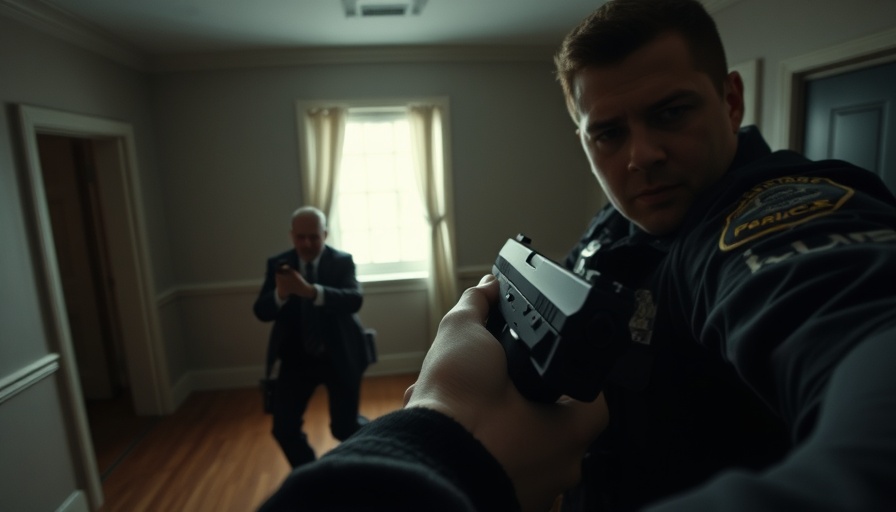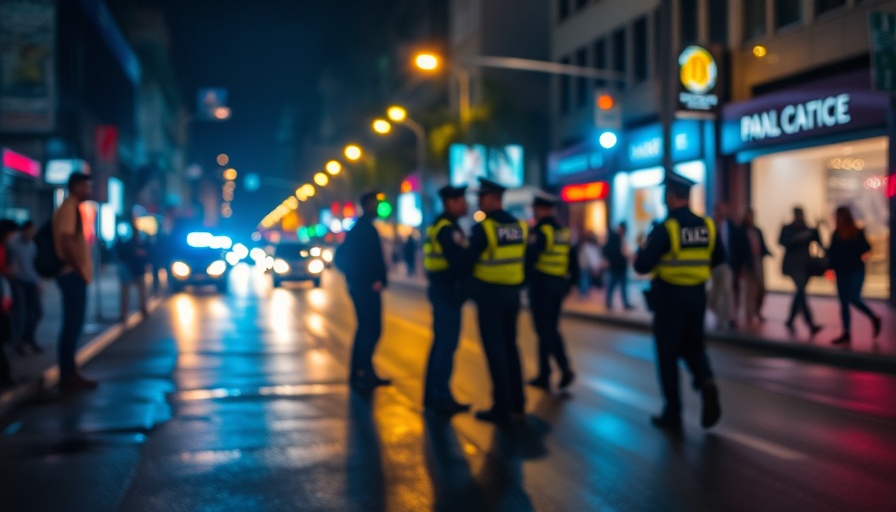
The Disturbing Incident in Concord
On February 18, a tragic confrontation unfolded in Concord, California, when police officers responded to a distress call regarding a domestic violence incident. The call, made by Nathan Keesler's mother, reported that her son was violently attacking his father with a large kitchen knife in their home located on Natoma Boulevard.
When officers arrived shortly after 1:40 a.m., they were faced with a grisly scene. Body-worn camera footage revealed that Keesler, a 47-year-old man, was seen repeatedly stabbing his father. Urgent shouts from responding officers implored Keesler to drop the knife, but he refused, committing a serious and potentially fatal act before them.
Analysis of Police Response
The response to this volatile situation highlights the critical decisions police must make in life-threatening scenarios. Five officers collectively fired 20 rounds across three separate volleys after Keesler lunged at them, prompting the use of lethal force.
Sgt. Christopher Souza and Officer Roy Olson were among the first responders. Officers not only had to navigate the immediate threat posed by Keesler but also consider the safety of the father, who had sustained multiple stab wounds. Reports indicate that a bullet fired by an officer also accidentally struck the father, but he survived after receiving prompt medical attention.
Insights on Police Use of Force and Community Impact
Incidents like this raise essential questions about police use of force and the corresponding policies governing such tactics. While officers faced a critical decision with limited time for deliberation, the incident sheds light on broader concerns about the protocols surrounding use of force in domestic violence scenarios.
Community leaders and advocacy groups often highlight the need for transparent policies that not only protect the officers but also safeguard innocent individuals caught in violent situations. Conversations about police accountability and the implications of their use of force are essential in maintaining trust within communities.
Future Directions for Police Training Programs
This tragic event underscores an urgent need for improved police training programs focused on mental health and crisis intervention. Officers increasingly encounter individuals in states of mental distress or crisis—a reality highlighted by incidents involving domestic violence.
Technology can support these training initiatives. Advanced simulation training and body-worn camera analysis could enhance officers' decision-making skills during high-stress encounters. Investing in ongoing education about de-escalation strategies could significantly minimize incidents involving lethal force, providing officers with the tools to resolve conflicts without resulting in injury or loss of life.
The Role of Body-Worn Cameras in Law Enforcement
Body-worn cameras (BWCs) have become imperatives in modern policing, not only for accountability but also for transparency and understanding police interactions. This incident illustrates how BWCs can provide crucial evidence during investigations and public scrutiny.
With the increase in discussions around police accountability, the importance of BWC footage is amplified. Not only do these recordings allow for scrutinizing police tactics, but they also serve as a resource for training the next generation of law enforcement. Leaders in the field of policing should advocate for expanded use and support for BWCs to foster trust and transparency with their communities.
Emotional Dynamics and Community Relations
The emotional landscape post-incident impacts not just the officers involved but also the families and communities. Conversations surrounding public safety and mental health must be integrated into community-based prevention efforts.
Understanding how trauma affects both the victims and the perpetrators can help police departments approach incidents differently. Officers trained to recognize signs of trauma and de-escalate situations can reshape community relations, allow for more compassionate policing, and ultimately contribute to healthier outcomes—both within families experiencing violence and the broader community.
Taking Action: What Can Be Done?
Given the tragic nature of this incident and similar situations, it is imperative for policymakers, law enforcement leaders, and community members to engage in meaningful dialogue. Advocates for police reform should leverage these moments to push for comprehensive training reforms and improved mental health resources for officers and at-risk communities.
Moreover, investing in community policing initiatives can foster closer relationships between law enforcement and the neighborhoods they serve, mitigating circumstances that lead to violent encounters.
Conclusion: A Call to Prioritize Public Safety and Police Accountability
The Concord incident serves as a grim reminder of the complexities and dangers inherent in police work, particularly when mental health is in the equation. To create a safer environment for all, the integration of mental health strategies, improved training, and strong community relations represents a necessary direction for law enforcement agencies. Policymakers and community stakeholders should prioritize these changes to prevent future tragedies.
 Add Row
Add Row  Add
Add 

 Add Element
Add Element 




Write A Comment